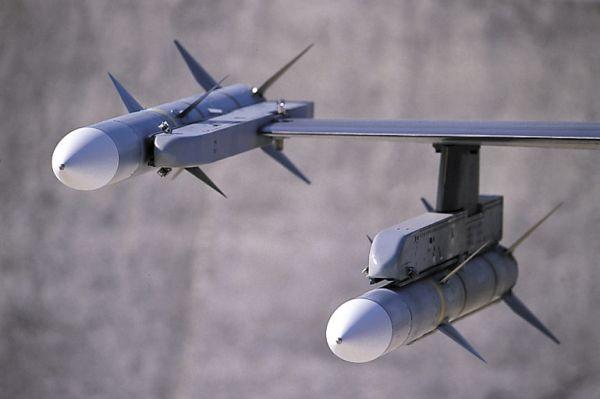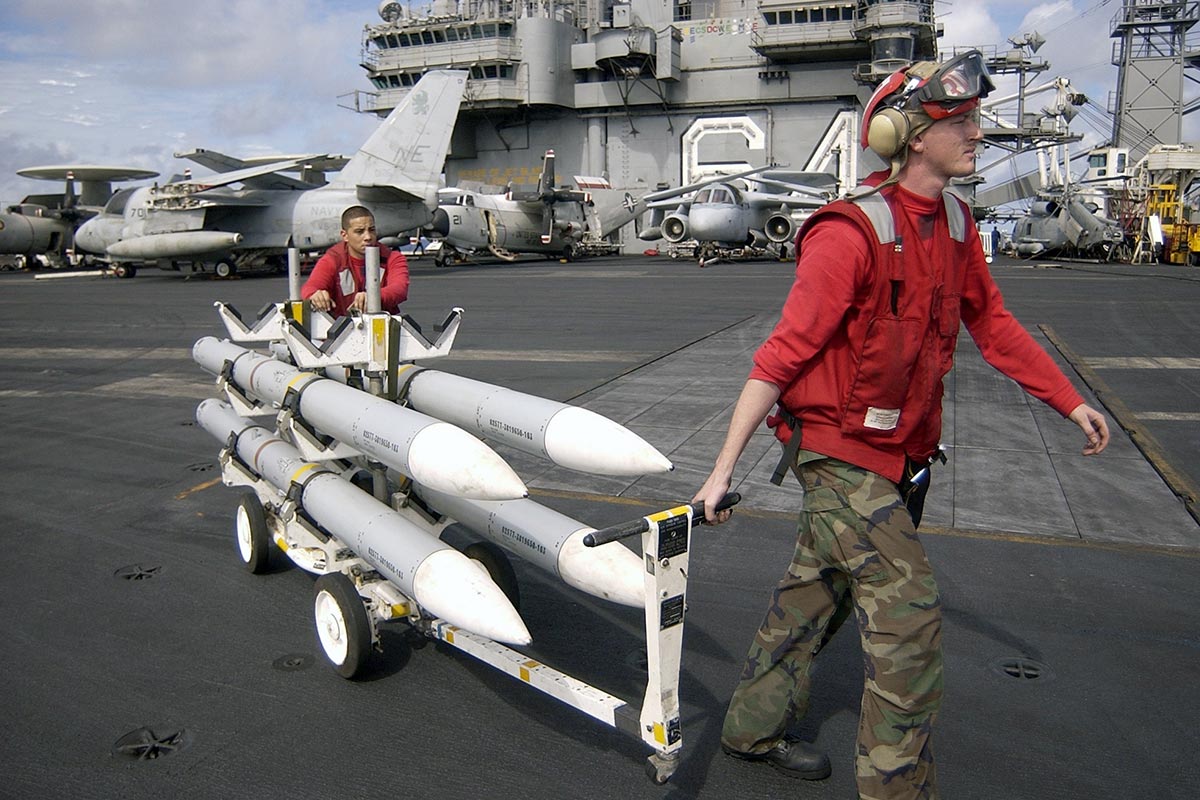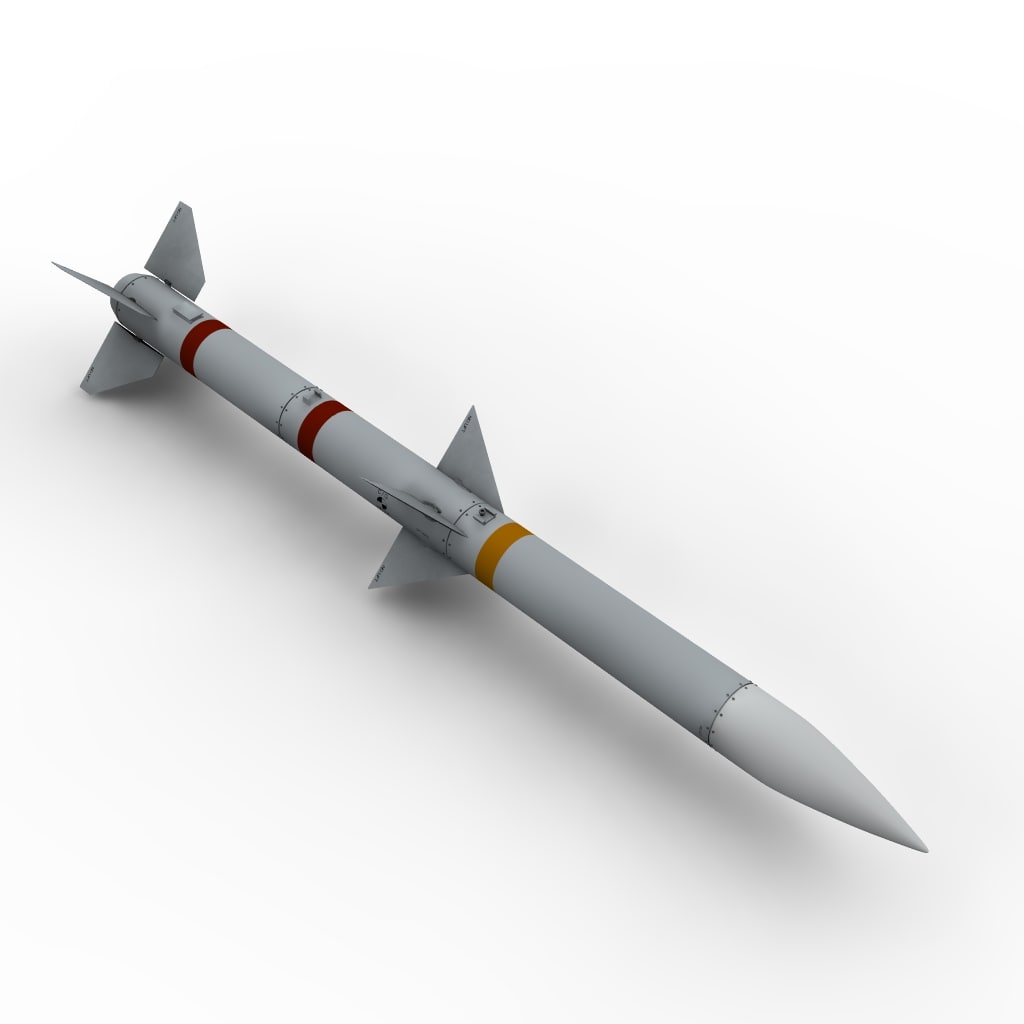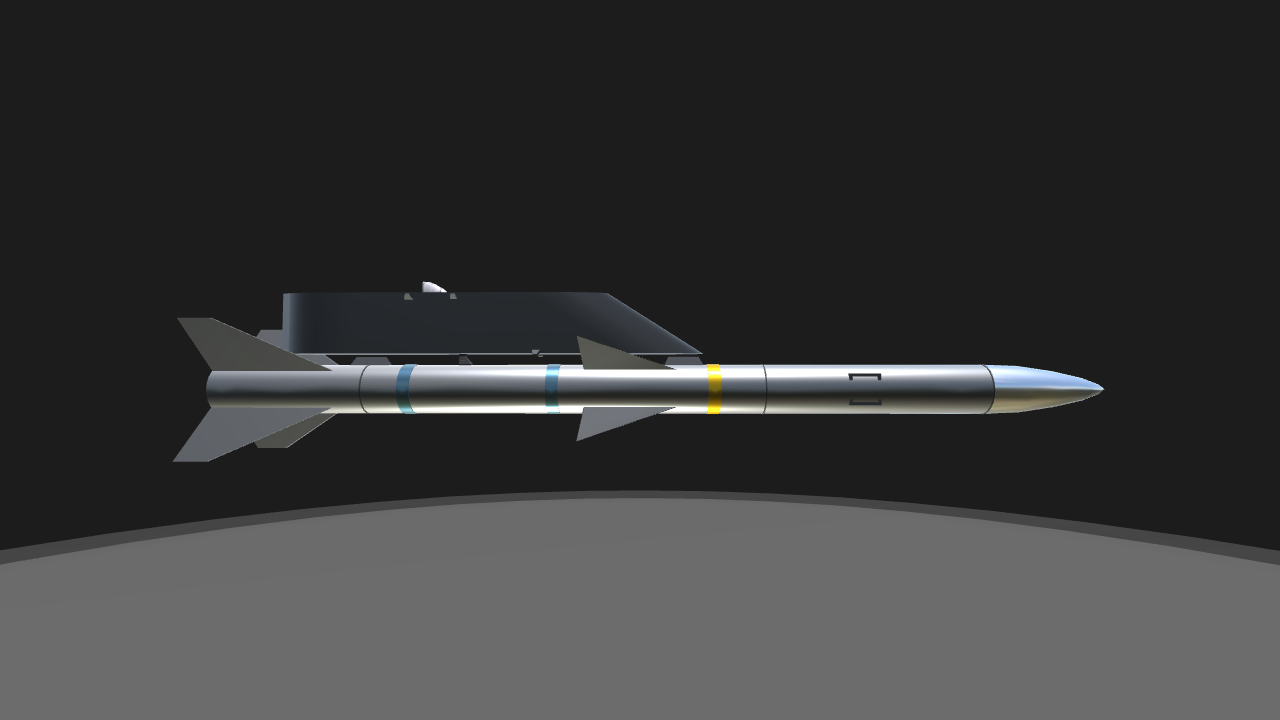
Firing AIM-120s in MADDOG mode is also a powerful weapon for flushing out enemies hiding behind terrain, as the missile can be launched over the terrain without exposing the deploying aircraft to possible counterattack. Because RWR cues are minimal when the missile is fired this way, it can be a great way to surprise unaware enemies at range. After launch, the missile will immediately begin searching for targets using the built-in radar projector. This allows the missile to be launched without the deploying aircraft locking the target - or even activating its radar at all. Pilots also have the option of enabling MADDOG firing for the AIM-120 in the EQUIP menu and activate it by holding the trigger for a few seconds.

10 seconds before impact, the missile switches to a built-in radar projector to home in on its target ("goes Pitbull") and functions independently of the deploying aircraft's own sensors this allows it to break off and make evasive maneuvers or even duck into cover to disengage if needed. Once it gets close enough to its target, approx. When fired, it relies on the firing aircraft's built-in radar to calculate a lead-pursuit course to its target, allowing it to account for even extremely fast-moving aircraft and adapt more easily to flight maneuvers. Its potential range and speed in the air make it an excellent weapon for deployment against distant enemy aircraft. “Our focus will continue to be on providing Ukraine with real combat capability to enable them to defend their country, but for operational security reasons, we won’t discuss what initiatives we may or not be undertaking in this effort.The AIM-120 AMRAAM (Advanced Medium-Range Air-to-Air Missile) is a radar-guided Air-to-Air missile available to the F/A-26B and T-55. “We are in regular contact with Ukrainian leaders, and we’ll continue to consult closely with Ukraine on their security assistance needs - both near and longer term,” said Lt. The military is working on: “How do you mount this thing? Can you get all the electronics in the aircraft to talk to this thing that wasn’t meant to be launched?” said one of the DoD officials.Ī DoD spokesperson declined to comment on the effort due to operational security.


The main problem is that the American and Soviet systems are so different that the missile and aircraft can’t communicate with each other. To fire a shot, first the aircraft radar gives the missile a target, and guides the missile until it is close enough to find the target on its own. Not only must the missile physically be fitted onto the aircraft, it must also “talk” to the aircraft’s radar. Both were granted anonymity in order to discuss internal deliberations. and Belgium, which are fired from Western-provided air defense systems such as the National Advanced Surface-to-Air Missile System.īut the integration process poses challenges, said one of the DoD officials and another person with direct knowledge of the effort. Ukraine already has a number of the missiles, which were provided by European countries, including the U.K. has provided the capability to fire air-to-air missiles from aircraft, however. The Pentagon has also sent the Joint Direct Attack Munition, which converts air-launched munitions into smart bombs.īut integrating the AIM-120s with MiGs would be the first time the U.S. has already provided Kyiv air-to-ground missiles, such as the AGM-88B High-speed Anti-Radiation Missile, which can be attached to the MiGs and used against ground targets such as radars and air defense systems. Officials are looking for more creative solutions to fill that gap.

to do an assessment of their skills on simulators at an Air National Guard base in Tucson, Ariz., but officials said they will not fly American aircraft. Ukraine has been pushing for modern fighter jets for the conflict, among other things to help with air defense, but so far there is little appetite among Western leaders to send more advanced aircraft such as the F-16. Officials are concerned that Ukraine is running low on air defenses as Russia continues missile attacks and even sends decoy balloons with radar reflectors to deplete Ukrainian missiles. military officials believe Kyiv is looking to mount its offensive in the next six to eight weeks as the weather warms up and Ukrainian forces finish their training on combined arms maneuver tactics in Germany, the DoD officials said. Senior American generals hosted Ukrainian military officials last week in Wiesbaden, Germany, for a set of tabletop exercises to help Kyiv get ready for the next stage of the war. The effort, if successful, could be part of a solution to Kyiv’s need for additional firepower and air defenses as both Ukraine and Russia prepare for major offensives this spring.


 0 kommentar(er)
0 kommentar(er)
